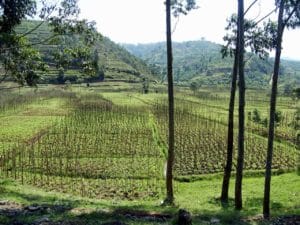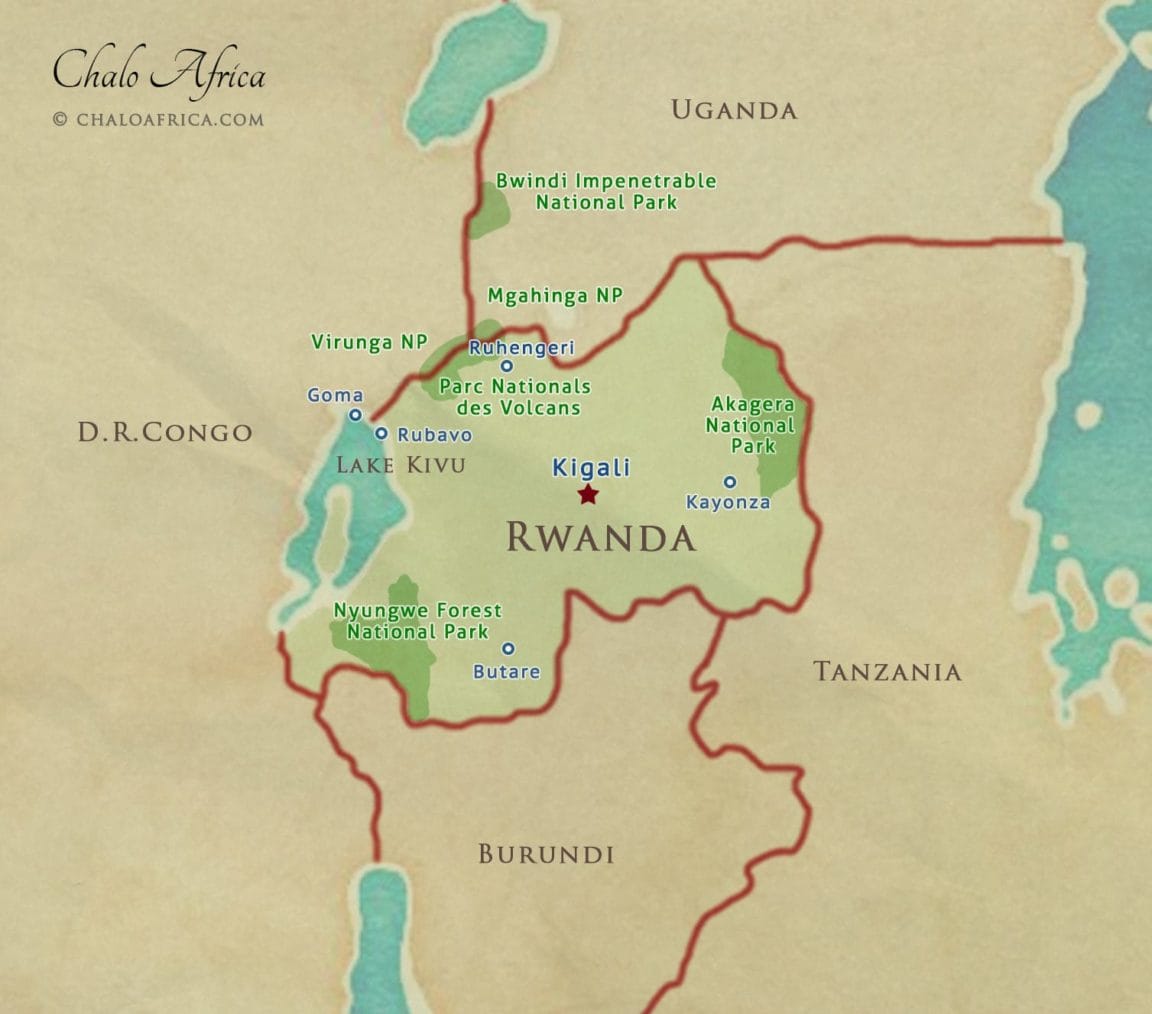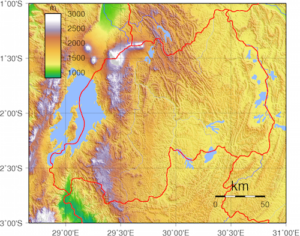
Rwanda Travel Guide
About
History of Rwanda
Often referred to as “The Land of a Thousand Hills,” Rwanda is thought to have been settled between 5,000 and 10,000 years ago. The first people here were the Pygmy Batwa (whose descendants, the Twa, make up 1% of the modern Rwandan population), but they were largely supplanted by Bantu groups, the Bahutu and the Batutsi (Hutu and Tutsi), by the fifteenth century. Precolonial records of the region, which largely begin with the reign of Rwabugiri in 1860, show little evidence of strife between the Hutu (the agriculturalist majority) and the Tutsi (the cattle-herding minority).
Rwanda and Burundi (known during the colonial era as Ruanda-Urundi) were among the last to be brought under European control when the region was assigned to the German Empire in 1890, and then to the Belgian state in 1916. It was these Europeans (particularly the Belgians) who introduced the concepts of eugenics and racial hierarchy in Rwandan society, prompting a rise in interethnic tension. The late 1950s saw the rise of Grégoire Kayibanda, one of the leaders of the Hutu emancipation movement, who was elected president in 1960, and prime minister when Rwanda achieved independence in 1961. In 1973, Kayibanda was overthrown by the Hutu Juvénal Habyarimana, who instituted a military dictatorship in the country. His power was threatened by the 1990 invasion by the Rwandan Patriotic Front (RPF), a rebel group consisting mostly of exiled Tutsi veterans, which sparked a three-year civil war.
On April 6, 1994, Habyarimana was assassinated when his plane, which also carried the Hutu Burundian president, was shot down over Kigali. This event immediately triggered the terrible Rwandan Genocide, in which some 800,000 Tutsis (as well as moderate Hutus) were murdered in a three-month hysteria while the international community watched from the side-lines. The genocide ended only when the RPF, led by Paul Kagame, gained control of the entire country, at which point Kagame instituted a government of national unity and committed Rwanda to a program of rehabilitation and reconstruction. Trials for perpetrators of genocide, which were carried out both by the UN International Criminal Tribunal for Rwanda as well as local Gacacas, were concluded in 2015. Today, it is illegal to discuss ethnic differences in Rwanda.
And Rwanda has made clear that it is deeply committed not only to reconstruction, but also to modernization. Its Vision 2020 plan aims to transform the country into a thriving, middle-income country by the end of the decade. Already, it has become the first nation in the world to ban plastic bags, as well as the first nation to be declared landmine free. Despite some concerns, it now ranks as one of the least corrupt countries in Africa. And with a booming tourism industry that boasts experiences that cannot be found anywhere else in Africa, Rwanda is truly a jewel of a country, whose magical landscapes and wildlife are not to be missed.
Parks & Map
Rwanda, also known as the land of a thousand hills, is home to several national parks:
- Volcanoes National Park (Parc Nationals des Volcans) – Home of the mountain gorillas and where Dian Fossey worked for many years
- Nyungwe Forest National Park – Home to 13 primates including chimps
- Akagera National Park – 1,100km² of savannah and woodland, reminiscent of typical East African safaris.
- Gishwati-Mukura National Park – The newest park in Rwanda.
Geography
Geography of Rwanda
Mountainous Rwanda is a landlocked country, with Uganda to its north, Tanzania to its east, Burundi to its south, and the Democratic Republic of the Congo and Lake Kivu (one of the twenty deepest lakes in the world) to its west. The mountains that so define most of the landscape form a part of the Albertine Rift Mountains and also contribute to the Congo-Nile Divide (80% of the land belongs to the Nile watershed system, while the other 20% belongs to the Congo watershed system). The mountains and hills eventually give way to the Kagera River Valley in the east. Rwanda’s highest point is Mt. Karisimbi (4,519 m), an inactive volcano in the Virunga Mountains in the east; its lowest point is in the Rusizi River (950 m), which flows into Lake Tangyanika. Rwanda is also known for its Nyungwe Forest, one of the best-preserved montane rainforests in Central Africa. The country’s capital, Kigali, is in the centre of the country, in the larger Kigali Province (Umujyi wa Kigali).
When to go?
Best Time to Visit Rwanda
The best time to visit Rwanda is when it is usually not raining: June to September and from December to January.
Located not far south of the equator, Rwanda has a temperate tropical highland climate, largely due to its high elevation. Average temperatures tend to be cooler in the northwest than in the lowlands of the east, with temperatures in Kigali (in the interior highlands) hovering around 21°C (70°F) all year round. The Rwandan climate also features two rainy seasons: the first is from February to May, and the second is from October to November. Typically, the mountainous regions in the north and west tend to receive more rainfall than areas in the south and east. The hottest months of the year are usually August and September.
Facts
Fast Facts about Rwanda
- Official name: Republic of Rwanda
- Demonym: Rwandan, Rwandese
- Capital city: Kigali
- Population:2 million (2015)
- Land area: 26,338 km²
- Major languages: Kinyarwanda, English, French
- Major religions: Roman Catholicism, Protestantism, Seventh-day Adventism, Islam
- Ethnic groups: Hutu (84%), Tutsi (15%), Twa (1%)
- Currency: Rwandan Franc
- Drives on the…: Right
- International calling code: +250
- Time zone: Central African Time (GMT+2 / IST-3.5)
- Electricity: 220/240 V; European-style, two prong electrical sockets
- Major airports: Kigali International Airport (KGL), Kamembe Airport (KME)



